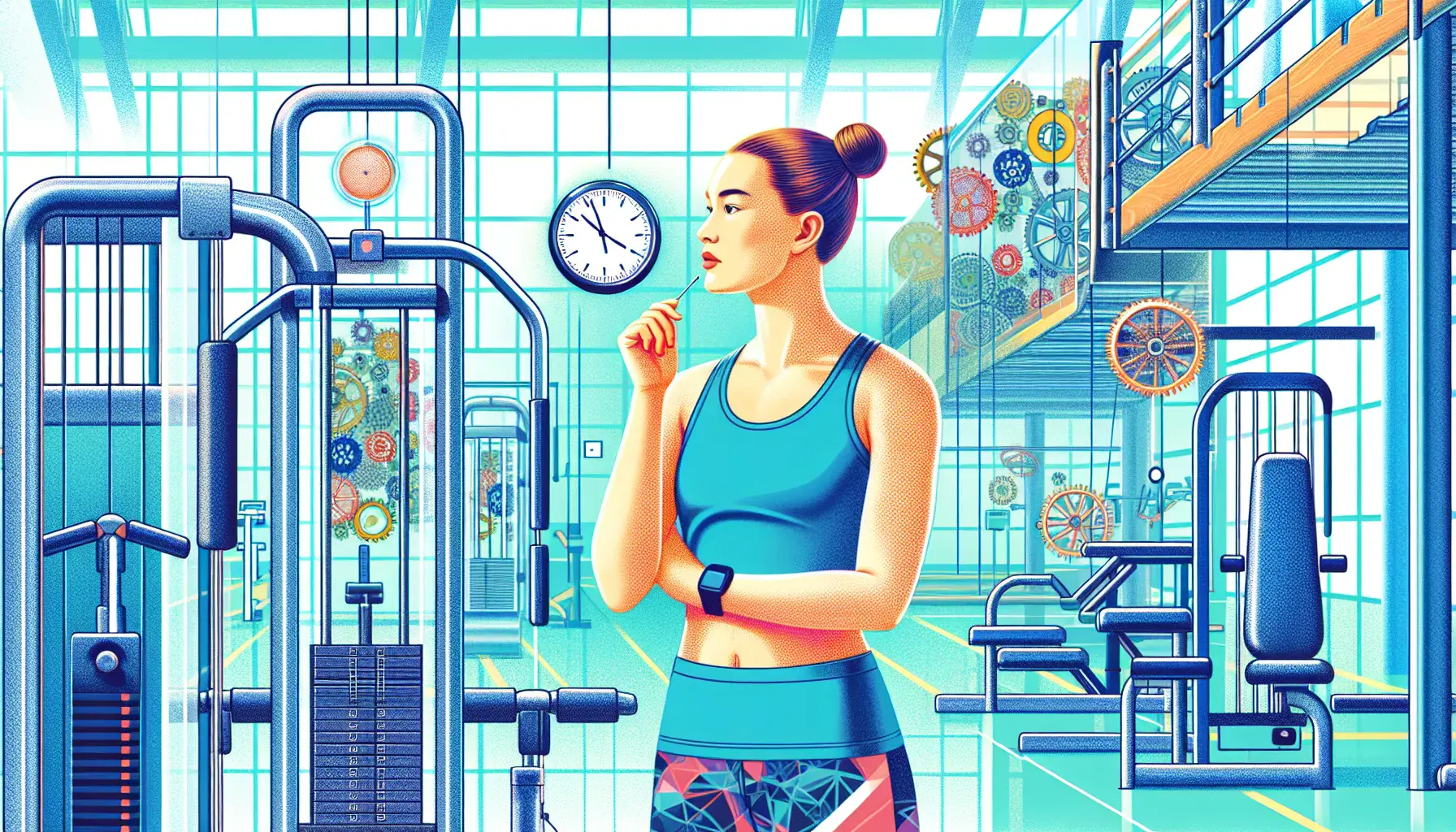Wondering how long you should wait to work out after eating? It’s a common question that can make or break your workout experience. Timing your meals and exercise can significantly impact your performance and comfort. You want to fuel your body without feeling sluggish or uncomfortable during your workout.
Finding the right balance between eating and exercising can be tricky. Too soon after a meal, and you might face digestive discomfort. Wait too long, and you could miss out on the energy boost your body needs. In this article, we’ll explore the optimal waiting times based on different meal sizes and types, helping you maximize your workout potential while keeping your body happy.
Overview of Post-Meal Exercise
Post-meal exercise timing plays a crucial role in enhancing workout performance and comfort. It’s essential to understand how long to wait after eating before engaging in physical activity.
- Meal Size: Larger meals require longer digestion times. For a substantial meal, waiting 2 to 4 hours before exercising is advisable. This allows your body to process nutrients effectively.
- Meal Composition: High-fat and high-protein meals slow down digestion. If you consume these types of meals, consider waiting 3 to 4 hours for optimal comfort during workouts. Meanwhile, lighter meals with carbohydrates can typically lead to a waiting period of about 1 to 2 hours.
- Intensity of Exercise: Moderate exercise, such as walking or light cycling, can usually commence sooner, within 30 minutes post-meal. For intense workouts, a longer waiting time provides a more comfortable experience, suggesting a delay of 1 to 3 hours after eating.
- Individual Variability: Each person’s digestive system differs. Some may feel comfortable exercising sooner, while others may need longer waiting periods. It’s vital to listen to your body and adjust accordingly.
Understanding these factors helps you determine the best timing for workouts post meals, enhancing your energy and performance during exercise routines.
Factors Influencing Workout Timing
Various factors influence how long you should wait to work out after eating. These elements include the type of food consumed and your individual metabolism, both of which play significant roles in your comfort and performance during exercise.
Type of Food Consumed
The type of food you consume dictates your waiting time before exercising.
- High-Fat Foods: Foods high in fat take longer to digest, usually requiring a wait of 3 to 4 hours. Examples include fried foods, fatty cuts of meat, and creamy sauces.
- High-Protein Foods: Similar to high-fat meals, meals rich in protein necessitate a waiting period of about 3 to 4 hours. Examples include steak, chicken, and legumes.
- High-Carbohydrate Foods: Meals that are primarily carbohydrates can often be digested more quickly. These typically require a wait of 1 to 2 hours and include foods like pasta, rice, and fruit.
- Light Snacks: If you consume lighter snacks such as yogurt or a banana, you might only need to wait about 30 minutes to 1 hour before starting your workout.
Individual Metabolism
Your individual metabolism influences how quickly your body digests food.
- Fast Metabolism: If you possess a fast metabolism, you might digest meals quicker than average, allowing for earlier workouts, typically within 30 to 60 minutes after lighter meals.
- Slow Metabolism: Those with a slower metabolism may need to extend their waiting time, often requiring 2 to 4 hours after larger meals to ensure proper digestion.
- Hydration Levels: Your hydration can also impact digestion. Staying hydrated facilitates better digestive processes, potentially reducing waiting time for workouts.
- Exercise Intensity: Consider how intense your planned exercise is. Higher intensity workouts may necessitate longer waiting periods to avoid discomfort.
Being mindful of these factors enhances your ability to align eating habits with workout schedules, optimizing both performance and comfort.
Recommended Waiting Times
Timing your workouts after eating significantly affects your performance and comfort. Consider these guidelines based on meal types and nutrient timing.
Light Meals vs. Heavy Meals
For light meals, wait about 30 minutes to 1 hour before exercising. This period allows for sufficient digestion without compromising energy levels. Light meals often contain easily digestible carbohydrates, such as fruits and yogurt.
For heavy meals, a waiting period of 2 to 4 hours is ideal. Heavy meals, rich in fats and proteins, take longer to digest. Consuming whole meals like steak and potatoes may require this extended time to avoid discomfort during workouts.
Nutrient Timing Considerations
Nutrient composition also plays a key role in timing. Meals high in carbohydrates generally digest quicker, allowing for exercise after 1 to 2 hours. Conversely, high-fat and high-protein meals necessitate a wait of 3 to 4 hours to ensure adequate digestion.
Adjust your waiting times based on your body’s signals. If a meal leaves you feeling sluggish, opt for a longer wait. If you feel energized, shorter waiting periods may suffice. Individual metabolic rates and hydration levels further influence these recommendations, so listen to your body for optimal results.
Signs You’re Ready to Workout
Recognizing when you’re ready to exercise after eating enhances performance and comfort. Watch for these signs to determine if it’s time to start your workout:
- Absence of Discomfort: You feel comfortable in your stomach, with no bloating or cramping. Discomfort signals that your body is still digesting.
- Energy Levels: Your energy levels are high, and you feel motivated to move. Low energy can indicate that your body is still processing food.
- Mental Clarity: You experience mental alertness and focus. A clear mind allows for better concentration during workouts.
- Hydration: You maintain adequate hydration and feel well-hydrated. Proper hydration supports optimal performance and recovery.
- Body Signals: You listen to your body’s cues and notice a feeling of readiness, such as eagerness to engage in physical activity.
- Temperature Regulation: You notice your body temperature is normal and not too hot. When your body cools down after eating, it often indicates it’s ready for exercise.
- Digestive Sounds: You hear fewer digestive sounds, suggesting that digestion is progressing well. A quiet belly often signals readiness.
By monitoring these signs, you can determine the right moment to begin your workout after eating, maximizing your exercise experience.
Conclusion
Finding the right waiting time between eating and exercising can significantly enhance your workout experience. By paying attention to meal size and composition you can optimize your performance while avoiding discomfort. Remember that individual responses vary so listen to your body and adjust accordingly.
Whether you’ve had a light snack or a hearty meal understanding how long to wait will help you maintain energy levels and improve your overall fitness journey. Prioritize nutrient timing and recognize the signs that indicate you’re ready to hit the gym. With these strategies in mind you’ll be well on your way to achieving your fitness goals.
Frequently Asked Questions
How long should I wait to workout after a large meal?
For larger meals, it’s advisable to wait 2 to 4 hours before exercising. This allows your body enough time to digest the food properly, reducing the risk of discomfort during your workout.
What if I eat a light snack?
If you’ve consumed a light snack, you can typically start exercising within 30 minutes to 1 hour. Light snacks, often high in carbohydrates, digest more quickly, allowing for a quicker workout start.
How does the type of food affect workout timing?
High-fat and high-protein meals generally require a wait of 3 to 4 hours, while high-carbohydrate meals can often be digested in 1 to 2 hours. The type of food impacts how your body processes it before exercise.
Can I exercise immediately after eating?
Exercising immediately after eating is not recommended, especially after larger meals. Waiting gives your digestive system enough time to work, minimizing potential digestive discomfort during your workout.
What signs indicate I’m ready to work out after eating?
Signs of readiness include the absence of discomfort, high energy levels, mental clarity, adequate hydration, and a normal body temperature. Listening to your body will help maximize your workout effectiveness.







